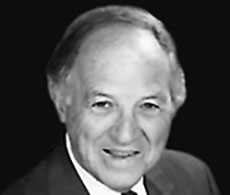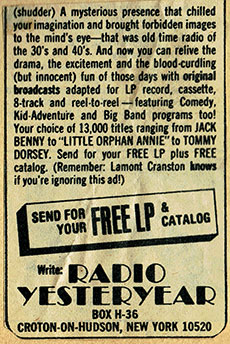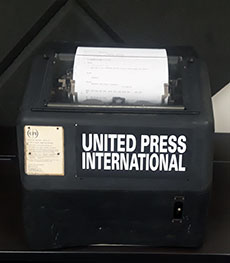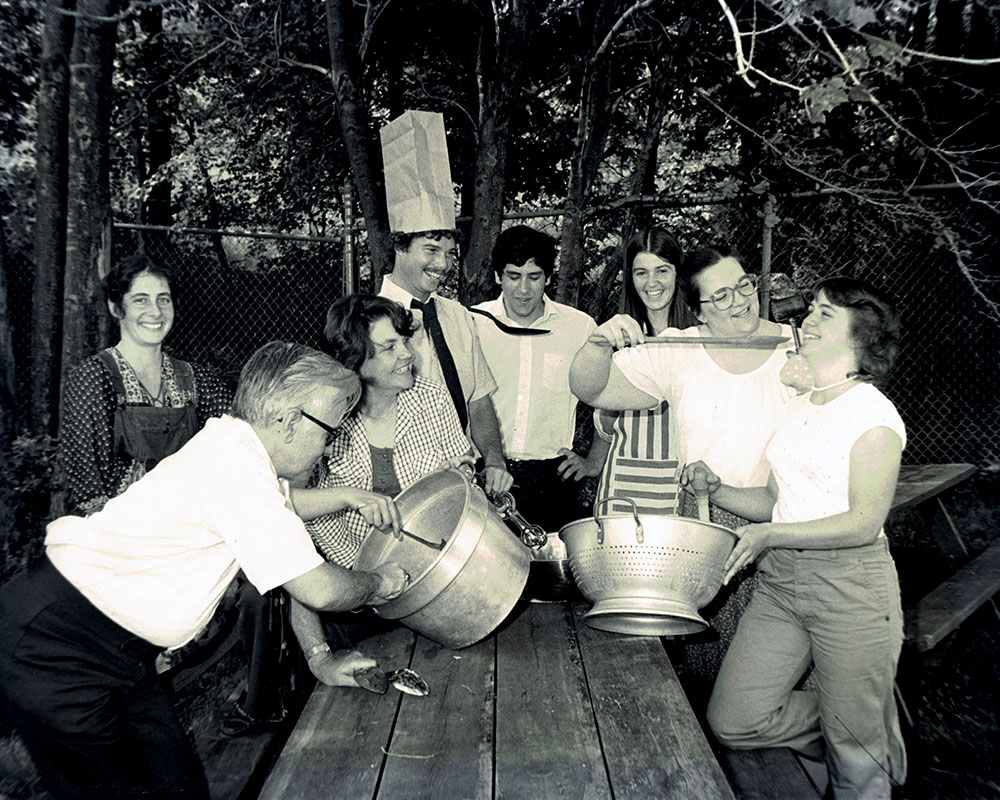I am all the way back holding a spoon in this photograph taken for a readers’ cookbook shortly after I left WHAV and joined the Haverhill Gazette. Sports reporter Fred Burnham appears at left, front. Who else do you recognize?
By Tim Coco
WHAV President and General Manager
Somehow, I never thought I’d be old enough to personally reflect on events that happened 40 years ago. In 1978, I joined the staff of WHAV the first time and, looking back, I marvel at just how much hasn’t changed as well as so much that has.
Mayor George K. Katsaros had recently returned to the corner office for his third term after his tenure was interrupted for two years by Fire Chief-turned Mayor Lewis C. Burton. Katsaros wrestled with the aftermath of urban renewal—particularly the future of the ill-fated Merrimack Street Parking Deck.
During the administration of Katsaros I, the deck was to be built flush with Merrimack Street so as to not further interrupt the now-pockmarked, post-demolition streetscape. During his single term in office, Burton wrested control of urban renewal away from the Haverhill Housing Authority and had the deck pushed back 50 feet in order to have commercial buildings built in front of it. Pushing the deck into the hill between the former Pecker and Fleet Streets meant cost overruns for redesign, particularly related to ventilation. Katsaros, however, re-inherited the worst of it. During its first winter under construction, the structure began tearing itself apart with seasonal expansion and contraction. Chunks of concrete fell and, it was believed, the deck was in danger of imminent collapse. It would be one of WHAV’s biggest news stories.
All these years later, the parking deck continues to make news. There was talk last year of taking it down because of its continuing impact on north-south travel downtown. In the last few weeks, as the city debated paying for another parking deck related to the Lupoli project, the issue of poor maintenance of the structure was raised. Curiously, the new deck is to be built where Katsaros’ George K’s Crystal Lounge just recently stood. It’s important to connect the past with the present.

My ol’ boss Edward I. Cetlin.
Eye-opening for this teen radio staffer was how important city policy developed late at night inside the offices of WHAV. Katsaros would visit then-WHAV General Manager Edward I. Cetlin and they resolved the issues of the day over cocktails.
Meanwhile, as a fresh reporter, I frequently met with returning Fire Chief Burton who claimed Katsaros had “jailed” him on the second floor of City Hall to keep his politics under control. Burton’s reorganization of city departments while he was mayor was rational and logical. It made it easy for this reporter to know who was responsible for what.
My Interest in Radio

The original 1976 Radio Yesteryear ad that sparked my interest in radio history.
I have to credit (he’d say “blame”) David Goudsward, now associated with WHAV, with my interest in radio. In 1975, Goudsward and I were supposed to create a short movie as part of a Humanities class project at Consentino School. Long story short, we didn’t realize there were only a couple minutes of film in the school-supplied 8mm camera. We hurriedly changed the project to a radio play. Goudsward pointed me to the new radio series, “CBS Radio Mystery Theater” and Mutual radio’s “Nightwatch” for inspiration.
I was hooked on radio.
Reading the weekly TV Guide magazine the next year as a freshman at Haverhill High School, I spotted an advertisement by Radio Yesteryear for old-time radio shows. I first bought a Jack Benny Show and three episodes of the serialized Adventures of Superman from the 1940s. There were no podcasts or MP3s in those days. I waited a few weeks for a cassette tape to come through the mail. I bought more and more and began learning about the great history of radio.
At about the same time, Tom Bergeron began playing snippets of old-time radio shows at 8:30 each morning over WHAV. I called the radio station and asked him if he needed more material from my now-growing collection. He was running low on shows and asked me to meet him at WHAV’s How Street studios.
It was my first visit to the station. I was enamored by the studios, equipment and history there. I plotted to somehow become a part of it.
Meanwhile, I discovered teachers George Moonoogian and Robert Johnson were similarly old-time radio enthusiasts and compiled large collections. Of course, public speaking instructor Edwin V. Johnson also worked at WHAV and—amazingly, in the high school’s front office—was Jacqueline Natalino, whose father John T. “Jack” Russ had put WHAV on the air in 1947.
During my junior year at HHS, pieces of my plot to join WHAV came together. I had a local history assignment due for history teacher John Gagnon. I decided to write the history of the local radio station. I interviewed Mrs. Natalino, pored through newspaper stories on microfilm at the Haverhill Public Library and interviewed staff at WHAV, particularly Madolyn Roberts. I slowly made myself a fixture at WHAV.
Looking ahead to my senior year, I pestered Guidance Counselor Peter Leduc into approving my internship at WHAV. He said the school had no formal arrangements for such a program, but I wore him down. He finally said if I worked it out with WHAV, he would approve it. That was the easy part. Everyone at the station knew who I was by now and Cetlin agreed. I still had braces on my teeth and Cetlin was skeptical I’d ever make it on the air.
I worked six hours a day, weekdays, at WHAV. I started in the news department with odd jobs such as cleaning the chalkboard used for compiling election night results. The first program I voiced was “What’s Happening at HHS.” When it played Monday mornings, Bergeron would, as he was prone to do, augment it with humorous sound effects. Mention of whipped potatoes on the school lunch menu, for example, was accompanied by a swoosh cartoonish sound.
On the Air
Although brought on as an intern, I started receiving a paycheck just weeks into the gig. That’s when I began helping engineer Ted Nahil with overnight tasks at the Silver Hill transmitter site. Nahil coached me on obtaining the then-required Third Class Radiotelephone license from the Federal Communications Commission. I passed the algebra-laden three-hour test at the Custom House in Boston on the first try. Creating doubt that I’d pass was my poor math record in school. Looking back on it, I think mathematics in school was just too theoretical for me. At WHAV, algebra was practical in determining correct transmitter power.
Having the license in hand, I awaited the opportunity for an airshift. It came suddenly when Cetlin fired an announcer during a live shift. I popped in the studio, read a Mitchell and Co. ad and began spinning records. I hadn’t yet graduated from high school. I received coaching from Johnson, daytime news announcer Ralph Hall and weekend night disc jockey Earl Gynan. Gynan was a Boston radio legend, known in his heyday as “Mr. Midnight” on WEZE, playing records in the window at Boston’s Statler Office Building.
One of the funniest moments working with Bergeron came when WHAV agreed to broadcast live from the new Main Street McDonald’s restaurant. Bergeron was to spin records during the remote, but an uneven surface and old equipment caused the turntable stylus to skip across the records. Bergeron, as only he could, adlibbed humorous descriptions, while I played the records from the studio.
‘First with the News’

A United Press International teletype machine of the same vintage I used at WHAV between 1978 and 1980 was recently acquired by WHAV for use in teaching journalism and radio history.
In those days, admittedly, newspapers did a better job with local news. They had more reporters and the pages for indepth coverage. Neither is universally true today. In fact, radio began replacing newspapers as Americans’ first source for news in the 1940s. In the days before the internet, one had to wait for as much as 24 hours for a newspaper’s next edition. WHAV adopted the slogan, “First with the News,” because it could get a story out immediately.
On Nov. 4, 1979, news that Iran had taken U.S. embassy staff as hostages caused the bells to ring on the always-noisy United Press International teletype machine in WHAV’s newsroom. Residents tuned to WHAV for up-to-the-minute reports—which went on for 444 days.
With greater interest in news, Cetlin changed my role to full-time “newsman.” I worked mostly nights and weekends which allowed me to enter college during the day. I covered City Council, School Committee and other night meetings. Guidance from Johnson and Hall was invaluable both then and now.
Late Harbormaster William “Red” Slavit was a frequent visitor to the radio station on weekends. Pounding on the front door, Slavit alerted me—and thus the public—to his latest misadventure or rescue on the Merrimack River.
In 1980, I left WHAV to become a Haverhill Gazette staff writer. While my formal education was still incomplete, my on-the-job experience seemed to impress The Gazette’s Managing Editor Bernard J. “Barney” Gallagher. Even at the newspaper, I continued to learn more about WHAV’s rich history from sports writer Fred Burnham, who at one time was also a WHAV sports announcer.
At the Haverhill Gazette and, later, at the Daily News of Newburyport, it occurred to me that if I ever returned to radio, I would try to combine the deeper and fuller newspaper-style local reporting with the immediacy of radio. Now, at the helm of WHAV, I call it “the depth of newspapers with the intimacy of radio.” Incidentally, at the Daily News, I worked with yet another WHAV legend, former Program Director James Simmons.
Forty years later and the stories are much the same. Revitalizing downtown Haverhill, resolving the shortage of parking spaces, strategies to address crime, how to make government transparent and accountable and other similarities.
You Too Can Help Support Local News Reporting
Today’s 97.9 WHAV FM is a nonprofit, educational corporation. There’s never been a better or more important time to support local news.
WHAV members pay for up to half of the cost of hiring reporters, anchors and producers to bring you original and often exclusive local news. As others cut back, WHAV turns out more local news, more often than all other sources combined. Of course, that’s what you would expect from the only Haverhill-based news source.
Consider WHAV’s News Match subscription with a convenient and affordable monthly rate of only $20.83. It’s tax-deductible. Click here to learn more.
